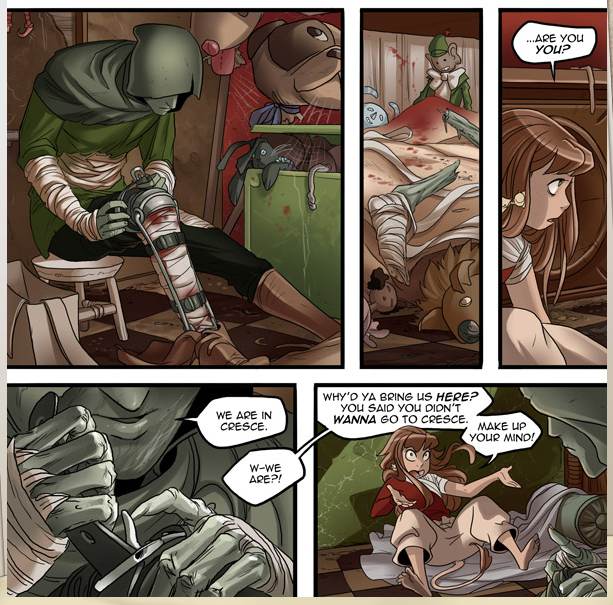Most of the time, high fantasy is set in a world based in historical Europe. There are some wonderful backdrops there -- beautiful castles, scenic farmlands and thick forests; there's also a big challenge to the setting, however: To retain the authenticity of its historical roots, most of the characters are typically depicted as Caucasian. You can perhaps create diversity by using standard Tolkien races (dwarves, elves, orcs and such), but usually the common, everyday people often look like the same kinds encountered in Arthurian legend or a Robin Hood story.
One of the most remarkable things about Ashley Cope's Unsounded is how she twists the formula of the typical fantasy setting. Most of the characters, for example, seem to be of African descent. How do the people of Cresce look like when dressed in Renaissance-fair garb? Pretty darned cool, it turns out. Their hairstyles are a little modern, but that's been a problem with a lot of high fantasy.
Unsounded starts by following two travelers. Sette Frummagem is a tiny motormouth who seems like she's on a constant sugar rush; her speech patterns are nigh indecipherable. She's also quite annoying ... at first, anyway. I think Stockholm Syndrome set in the middle of Chapter 3 and I started looking forward to any scene she was in. Sette has been sent on a journey by her crime-boss father to collect delinquent payments from a far-off relative. Duane is her undead protector with magic powers; he was contacted by the Frummagems to keep Sette safe. While he doesn't approve of the Frummagem business, he seems to have taken a liking to the spunky girl. His mind has a tendency to deteriorate, though, and at a certain point his human side succumbs to the cannibalistic monster within.
Their trip gets derailed when they tangle with a group of child slavers known as the Red Berry Boys. They're not just using children for slave labor, which is bad enough: Kids are also being mutilated in terrible ritual sacrifices. This makes Duane especially angry, as he is all about keeping the kids safe. Duane's more violent activities, however, make him a suspect to Emil Toma, the local lawman who's also trying to bring the Red Berry Boys to righteous justice. Another hang-up: Sette's own family may be working closely with the slavers.
It dark subject matter, to be sure, to the point where's it's morbidly satisfying to see a slaver get messily murdered. Unsounded never plunges too deep into the darkness, though. This is, first of all, a fantasy setting, which means a lot of laser light shows that erupt when two sorcerers meet to do battle. Secondly, someone uses a giant cartoony ogre for transportation. Also, this is a comic where noble knights ride giant dogs instead of horses. I suppose that Unsounded sort of works on the Final Fantasy principle: Approach your central theme with deadly earnestness, but also have your guys riding inappropriately large animals.
Another great thing to look out for in Unsounded is how Cope has fun playing with the imagined limitations of the comics page and surprising the reader with the capabilities of a comic viewed in a browser. From the beginning, she liked to set up frames as if the art was escaping beyond its borders. Later, she'd take a more minimal approach, hiding the headers and menu bars to create a feeling of isolation. The only clickable space on the screen are the navigation buttons. It's first implemented when Sette is shown in a series of isolated single panels but surrounded by a black background. And then it happens again immediately later when Sette has entered some sort of dreamworld. This time, there are more panels rendered in a light color palette, and the background is white.
Lately, Cope has incorporated some limited animation to convey a raucous party atmosphere. While it is a little gimmicky, it's also effective, and it helps Unsounded to stand out from the many other fantasy-based webcomics out there.

